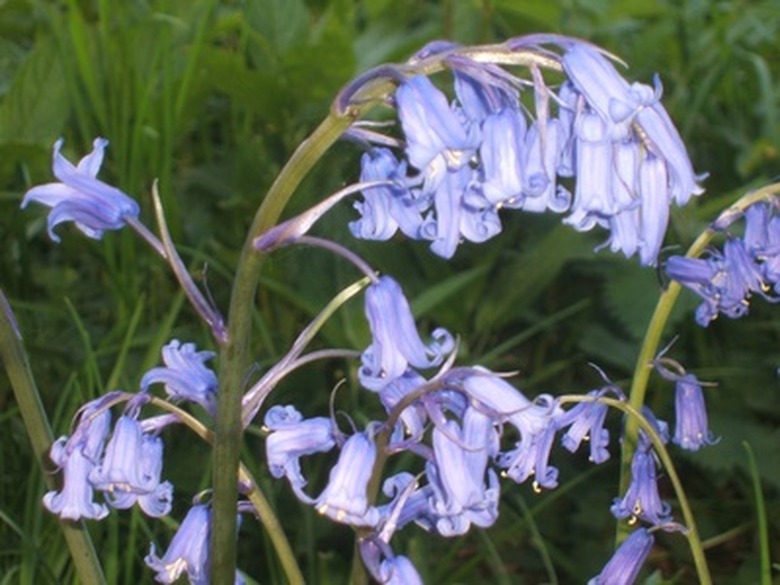Scottish Flower Names
Scotland boasts many well-known trees, including the Fortingall Yew, believed to be Europe's oldest. Some of the country's flowers, however, have their own legends. One is that a Norse army soldier removed his footwear to remain quiet during a night ambush against King Alexander III's army. Stepping on a humble Scotch thistle, he shouted in pain and cost his army the battle. There are many native flowers that Scottish people treasure.
Bluebell
Bluebell (Hyacinthoides hispanica), or wild hyacinth, crowds Scotland's shady woods. Its nodding, blue spring blooms are also common on stream banks and sea cliffs, according to WildAboutBritain.co.uk. Bluebell is a clump-forming, bulb plant with long, strap-like green leaves. Lavender or blue–very rarely pink or white–fragrant, bell-shaped flowers ascend its erect, 20-inch stems. A rapidly colonizing plant, bluebell will create broad swaths of color wherever it spreads. It tolerates both sun and partial shade and withstands winter temperatures of minus 40 degrees F and higher (USDA plant hardiness zone 3).
- Scotland boasts many well-known trees, including the Fortingall Yew, believed to be Europe's oldest.
- Some of the country's flowers, however, have their own legends.
Purple Milk-Vetch
Purple milk-vetch (Astralagus danicus) cloaks the coastal dunes of Eastern and Northeastern Scotland in summer green and purple. Standing 1 foot high, this pea family perennial has downy, divided foliage. Legend has it that goats browsing on the leaves would produce more milk, according to PlantPress.com. Dense, oval-shaped clusters of blue-violet flowers top its straight stems in June and July. Purple milk-vetch likes a sunny location with full sun and sandy or limestone-based soil.
Scotch Heather
The Scotch heather (Calluna vulgaris) genus encompasses several varieties of heather, according to the Heather Society. These plants have fed, warmed and sheltered the Scottish moors' wildlife and people from time immemorial. Growing across the Scottish landscape, they've contributed twigs for thatch and brooms, fuel for fire and flavoring for ale. Today, they are popular sources of honey. Most heather varieties have paired, linear deep green leaves that develop a purplish cast in winter. Yellow, orange, red, gray and brighter green are less common foliage colors. Plant forms also vary from low–2 inches high and 18 inches wide–to 2 feet high and up to 30 inches wide. Northern plants bloom from early to late summer, and southern ones from late summer to late autumn. Their white-to-red blooms appear in one-sided, erect clusters. Gardeners value Scotch heather for its four-season interest and its winter hardiness. Some heather cultivars tolerate temperatures to minus 30 degrees F, but all survive to minus 20 degrees F (USDA zones 4 and 5).
- Purple milk-vetch (Astralagus danicus) cloaks the coastal dunes of Eastern and Northeastern Scotland in summer green and purple.
- Most heather varieties have paired, linear deep green leaves that develop a purplish cast in winter.
